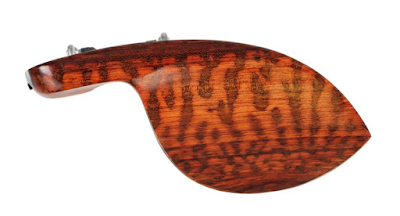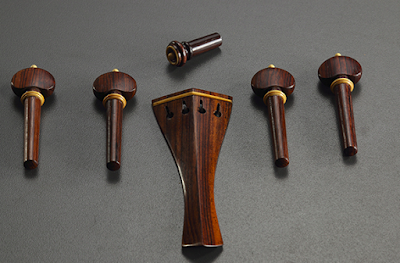Selecting The Best Violin Chinrest
A big part of playing a viola or the violin boils down to the proper selection of the instrument and the chinrest. A violin chinrest must perfectly complement your playing posture. But how do you select a chinrest? Check out the following steps.
1. Maximum comfort: For those who have been playing the violin for a while, should be aware of their comfortable position. But many inexperienced violinists hold their instrument very close to the left year. This strains the neck muscles. Look into the mirror and hold the instrument directly below your chin. Carry the violin around and check when the instrument starts cramming your neck. You may have to shift the instrument back to lessen up.
2. Discover the resting spot: The right, left, and the middle of the tailpiece is the best position to hold the violin. This is usually determined by the way you hold the instrument and your jawline shape. Keep this in mind while buying a violin chinrest, because forcing your chin towards a wrong direction could be painful.
3. The Shape: Each person has a different jawline. The jaw width and shape is the most important determinant for the chin rest. Place the violin under the chin and check the place where the hump rests on the chinrest. It’s easier for wider jaws to find a proper chinrest. A small chin or a narrow jaw may need a customized one.
4. The Height: The chinrest height matters if the player uses a shoulder pad or shoulder rest. The shoulder piece elevates the violin chinrest. You may need a higher chinrest if you don’t use the shoulder support. You must also observe how you are holding the bow, as well as the length of your hand and arms while playing the instrument or using the violin endpin.
5. Materials: A violin chinrest can be made from several materials and come in various finishes. Cost, however, can be a big factor for beginners. A plastic chinrest is usually less expensive and easier to clean. But these can soon become slippery and lead to skin breakouts. Wooden chinrests absorb the sweat and are easier to customize. They cost more but are worth the price.
6. Individual fit: Finally, select a violin chinrest that fits your playing style. Don’t blindly use the one your instructor is using. Invest in a quality product and preferably one that comes with a warranty.
1. Maximum comfort: For those who have been playing the violin for a while, should be aware of their comfortable position. But many inexperienced violinists hold their instrument very close to the left year. This strains the neck muscles. Look into the mirror and hold the instrument directly below your chin. Carry the violin around and check when the instrument starts cramming your neck. You may have to shift the instrument back to lessen up.
2. Discover the resting spot: The right, left, and the middle of the tailpiece is the best position to hold the violin. This is usually determined by the way you hold the instrument and your jawline shape. Keep this in mind while buying a violin chinrest, because forcing your chin towards a wrong direction could be painful.
3. The Shape: Each person has a different jawline. The jaw width and shape is the most important determinant for the chin rest. Place the violin under the chin and check the place where the hump rests on the chinrest. It’s easier for wider jaws to find a proper chinrest. A small chin or a narrow jaw may need a customized one.
4. The Height: The chinrest height matters if the player uses a shoulder pad or shoulder rest. The shoulder piece elevates the violin chinrest. You may need a higher chinrest if you don’t use the shoulder support. You must also observe how you are holding the bow, as well as the length of your hand and arms while playing the instrument or using the violin endpin.
5. Materials: A violin chinrest can be made from several materials and come in various finishes. Cost, however, can be a big factor for beginners. A plastic chinrest is usually less expensive and easier to clean. But these can soon become slippery and lead to skin breakouts. Wooden chinrests absorb the sweat and are easier to customize. They cost more but are worth the price.
6. Individual fit: Finally, select a violin chinrest that fits your playing style. Don’t blindly use the one your instructor is using. Invest in a quality product and preferably one that comes with a warranty.




Comments
Post a Comment